How is wine made? Learn the Basic Steps in Only 5 Minutes!
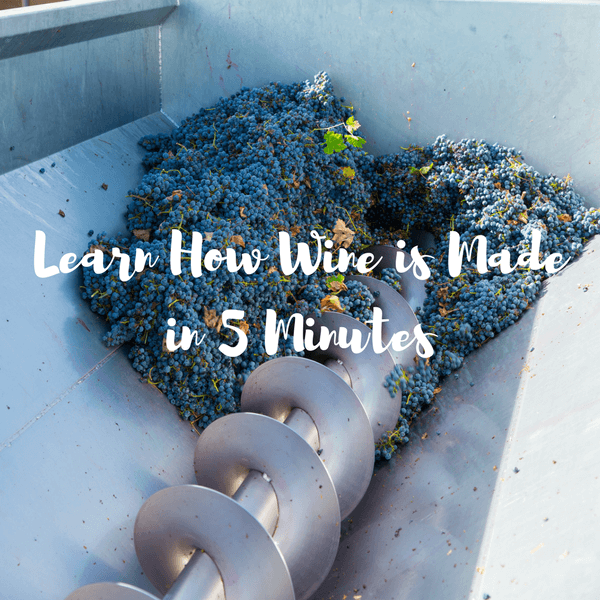 In the 7 years I’ve been writing this blog, I can’t believe I’ve never done a post on how our favourite glorious wine-y beverage is actually made. Some of you may already know the process of making a red and white wine, some of you might be a bit iffy about what goes on in the ‘winemaking’ stage of a wine and others may have no clue – which is totally okay!
In the 7 years I’ve been writing this blog, I can’t believe I’ve never done a post on how our favourite glorious wine-y beverage is actually made. Some of you may already know the process of making a red and white wine, some of you might be a bit iffy about what goes on in the ‘winemaking’ stage of a wine and others may have no clue – which is totally okay!
Winemaking: Largely synonymous with “Vinification,” winemaking is the process by which harvested grapes are crushed, fermented (and otherwise manipulated through yeast inoculations, temperature control, punch-downs, pump-overs, racking, oak-chip additions, filtering, etc.), aged in barrel, steel tank or other vessel, and finally bottled” – Wine Spectator
After attending City Wine in Perth recently I found the below flyers at the Harmans stand. On one side was a lovely intro to who Harmans are and on the other side was a great infographic of how a red wine and how a white wine are made. Kudos to the Margaret River Winemakers for putting these together.
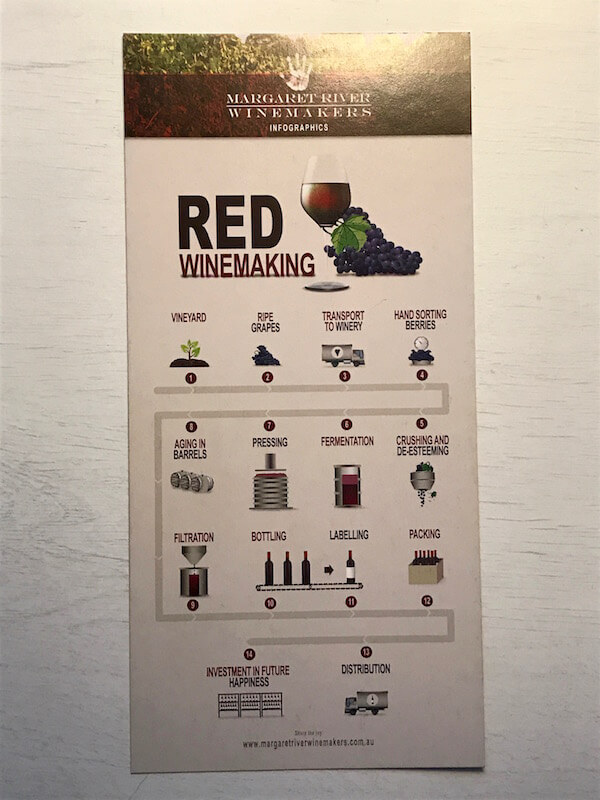
I actually think this is a very important topic to cover as it’s not as simple as saying it’s red grapes that make red wine and white grapes that make white wine. Think about a typical brut NV champagne which is white yet the typical blend is Chardonnay, Pinot Noir and Pinot Meunier – the latter two are red grapes.
Now I’m not going to go into excessive detail, believe me, you really could with a topic like this. But I’m simply going to lay out the basic steps so it helps you understand a bit more when winemakers or cellar door staff are explaining their wines.
So grab a glass of vino and let’s dive in (and yes the title is accurate, this post is a 5 minute).
How is Red Wine Made?
1. Once the grapes are ready to pick (we’ll leave all the vineyard aka viticulture bits and pieces for another post!) they are transported to the winery where all the winemaking equipment can be found
2. The berries are then sorted, typically by hand, to get rid of any unwanted debris
Pro Knowledge: If you hear the term ‘MOG’ this means ‘Material Other than Grapes’ which refers to when other debris like leaves and dirt are unintentionally harvested. You can read more about MOG here.
3. The grapes are then lightly crushed and de-stemmed
4. The grapes are then moved to a vat (skins and juice) where fermentation will start to take place
Fermentation: The process by which yeast converts sugar into alcohol and carbon dioxide; turns grape juice into wine” – Wine Spectator
5. The fermented grapes are then pressed so the juice is separated from all the skins and bits and pieces
Pro Knowledge: All those skins and bits & pieces are called ‘marc’ which can be used to make compost.
6. The pressed juice is then typically aged in oak barrels or stainless steel tanks (this again could be an entire blog post to discuss the different types of maturation aka ageing methods for wine)
7. Once the maturation process is done (the length of time depends on the grape and the desired final wine style the winemaker is looking to make) it’s then onto filtering and fining of the wine (the latter, fining, is only necessary if there are still tiny floaties in the wine after filtration)
Filtering: Pumping wine through a screen or pad to remove leftover grape and fermentation particles. Most wines are filtered for both clarity and stability, although many winemakers believe that some flavors and complexity are also stripped from the wine” – Wine Spectator
Fining: A technique for clarifying wine using agents such as bentonite (powdered clay), isinglass (fish bladder), casein (milk protein), gelatin or egg whites, which combine with sediment particles and cause them to settle to the bottom, where they can be easily removed” – Wine Spectator
8. Once the wine is essentially ‘cleaned up’ so it’s nice and bright and clear, then it is ready to be bottled, labelled and then hopefully it finds itself in a happy mouth like yours!
Before I jump into the white winemaking, if you’re interested in learning about rosé wine, I suggested you take a look at my Your Guide to Drinking Pink.
How is a White Wine Made?
1. Once the grapes are ripe and ready to be picked they are transported to the winery. As vintage aka grape harvest is in summer and it’s typically warm, it’s very important the grapes are transported as quickly as possible as white wine grapes in particular can easily be damaged by the heat. This is also why you hear about vineyard workers picking grapes at crazily early hours of the morning.
2. The berries are then sorted as per the reds above and also crushed and de-stemmed
3. Now this is where the process changes slightly compared to red winemaking, the grapes are pressed before fermentation (typically). For most of the whites you’ll drink this is the case, however there are a lot of experimental winemakers out there who play around with this process.
Pro Knowledge: When pressing red grapes, it typically doesn’t happen till after or near the end of fermentation because for red wine you want the juice to stay in contact with the grape skins to enhance colour, tannins and other phenolics from the skins. If you’re making a white wine from red grapes (like the Tyler’s Pearl Grenache) then you must remove the skins from the juice asap to not impart any colour at all.
4. Next up you have the fermentation process which can be done in oak barrels or vats/tanks. Some whites will then go on to be filtered and fined from this stage and others will be matured in barrels for a bit longer to aid the style of wine the winemaker desires to make.
5. Finally the wine is filtered and fined to ensure it’s nice and clean and clear for you and me before being bottled and labelled
And there you have it – that’s the basics of making red and white wines. This is obviously a very basic overview, however if you’re interested in reading more, I would suggest checking out the below resources:
- How Wine is Made: From Grapes to Glass, by Wine Folly
- How wine is made: An illustrated guide to the winemaking process, by Jamie Goode

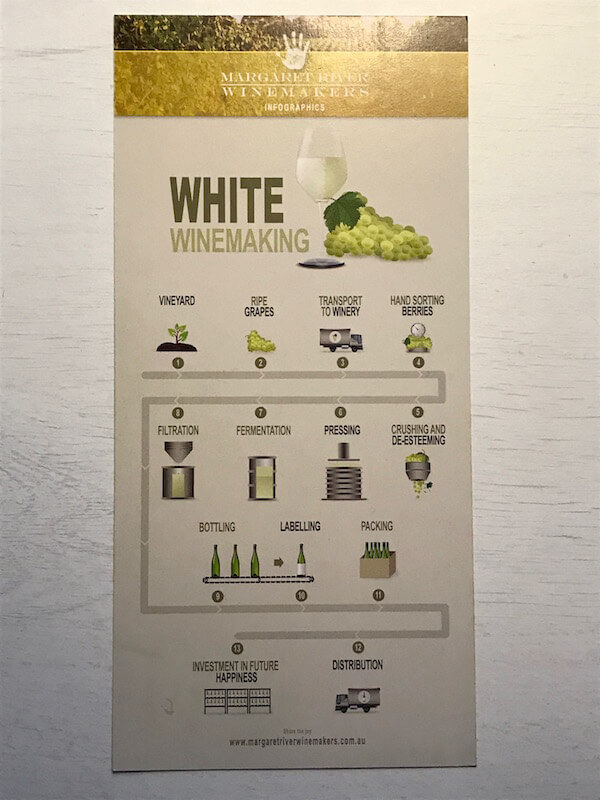
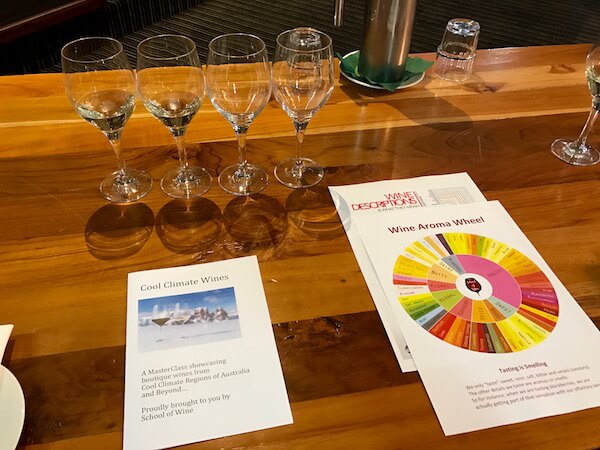


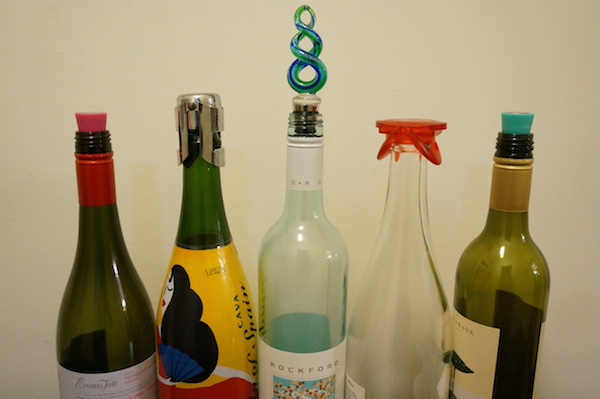
Hi Travis, glad you enjoyed the piece and perhaps learnt a thing or two new 🙂 New blog post coming soon!
I enjoyed your article, drinking wine is another thing and knowing how its made is another. Chart helped a lot to better understand. Now I can enjoy more while drinking wine. Looking forward to your next blog.
Thanks Todd, glad you enjoyed it! Yes the infographics show the basic/typical winemaking process. There is so much involved in making wine and with so many creative winemakers out there, they are always pushing the boundaries and conventional ways of making wine. Thanks for sharing the Wine Society’s cheat sheet, I’ll check it out 🙂
Really enjoying your articles Cassey and thanks for making it easier to understand the process of winemaking 🙂
That infographic diagram caused me some confusion as it implied that white wines only came from the green grapes but as you point out underneath, whites can still made from red grapes as well. Amazing how many people think that the colour of the grape defines the colour.
I came across this great ‘cheat sheet’ that helps clarify the varieties for beginners like me 🙂
http://www.thewinesociety.com/grape-varieties-list